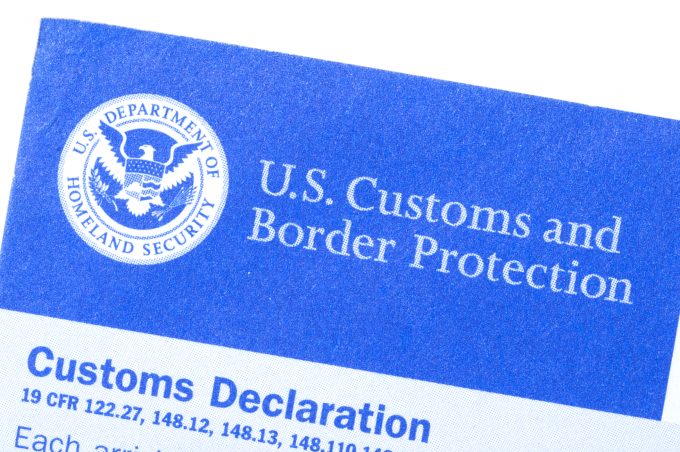US hit by fall in meat exports as China scales back and Brazil steps up
US meat exports are in low gear, affected by bans in the largest market, slowing ...
TFII: SOLID AS USUALMAERSK: WEAKENINGF: FALLING OFF A CLIFFAAPL: 'BOTTLENECK IN MAINLAND CHINA'AAPL: CHINA TRENDSDHL: GROWTH CAPEXR: ANOTHER SOLID DELIVERYMFT: HERE COMES THE FALLDSV: LOOK AT SCHENKER PERFORMANCEUPS: A WAVE OF DOWNGRADES DSV: BARGAIN BINKNX: EARNINGS OUTODFL: RISING AND FALLING AND THEN RISING
TFII: SOLID AS USUALMAERSK: WEAKENINGF: FALLING OFF A CLIFFAAPL: 'BOTTLENECK IN MAINLAND CHINA'AAPL: CHINA TRENDSDHL: GROWTH CAPEXR: ANOTHER SOLID DELIVERYMFT: HERE COMES THE FALLDSV: LOOK AT SCHENKER PERFORMANCEUPS: A WAVE OF DOWNGRADES DSV: BARGAIN BINKNX: EARNINGS OUTODFL: RISING AND FALLING AND THEN RISING

The US Customs & Border Protection agency (CBP) is poised to ramp up measures to intercept illegal substances and counterfeit goods entering the country via e-commerce shipments.
Monitoring of incoming mail will be increased through a mandate for data on all shipments to be submitted in advance – and e-commerce arriving in consolidations is also going to be subject to closer scrutiny.
Senior CBP personnel have recently indicated to the industry that new measures were in the pipeline. The agency is struggling to cope with a flood of parcels, with resources stretched further still by tariffs on a lengthy list of commodities from China.
Moreover, CBP is under political pressure to deploy effective means against the use of e-commerce to bring in illegal drugs, amid rising alarm about a fentanyl addiction epidemic in the US.
“They’re under tremendous pressure on the volume of shipments and patrolling goods coming in under de minimis, Section 321 shipments,” said Brandon Fried, executive director of the US Airforwarders Association, referring to imported goods that are exempt from duties under the personal daily exemption rules. The de minimis threshold in the US is set at $800.
E-commerce imports into the US are going through the roof. According to CBP, they have shot up from 1.4m daily at the beginning of this year to an estimated 2.1 m shipments by August, and the agency has warned that this could rise to 2.5m daily shipments by the end of the year.
The administration has set its sights primarily on mail. On October 3 the US Senate sent legislation to the White House to sign that will require the US Postal Service to send advance electronic data on incoming international shipments to CBP.
The bill mandates that, by December 31, data on 70% of all international mail must be transmitted before the goods reach the US border. By December 31, 2019, the threshold will rise to 100% of such shipments.
This will set mail in line with private courier companies, which have had to submit advance manifest data since 2002.
CBP is also looking to flows that enter the US via Canadian gateways.
According to the agency, a rising volume of e-commerce from China has been shipped to Canadian ports to be deconsolidated and moved by trucks, carrying hundreds of packages qualifying for de minimis exemption, which eliminates the need for clearance.
CBP intends to require Canadian trucking firms to file advance manifest data from January 1, 2019.
Further measures have yet to be disclosed.
At the National Customs Brokers and Forwarders Association of America’s conference late last month, CBP acting deputy commissioner Robert Perez told delegates the agency intended to embark on an initiative similar to the Customs-Trade Partnership Against Terrorism programme, established in the aftermath of the September 11 attacks. Shippers and logistics firms that participate in the scheme are less likely to have their shipments inspected.
CBP’s top brass have repeatedly declared that they want higher security and protection against illegal shipments through automation and data flow rather than physical inspection. While this is reassuring for US importers and forwarders, they have faced problems with data flows to the agency.
At this point there is no facility in CBP’s Automated Commercial Environment, the conduit for automated clearance, to handle Section 321 shipments, the classification for de minimis traffic. All Section 321 shipments entering the US as cargo are processed with paper documentation, to the ongoing frustration of forwarders.
The agency has pledged to change this. Having obtained $30m in a fiscal year appropriation to make changes to ACE in addition to its regular funding, CBP reiterated that automating Section 321 processing was a top priority, and announced that some of that additional money would be spent on the ability to receive manifest information for this traffic through its Automated Broker Interface.
Comment on this article